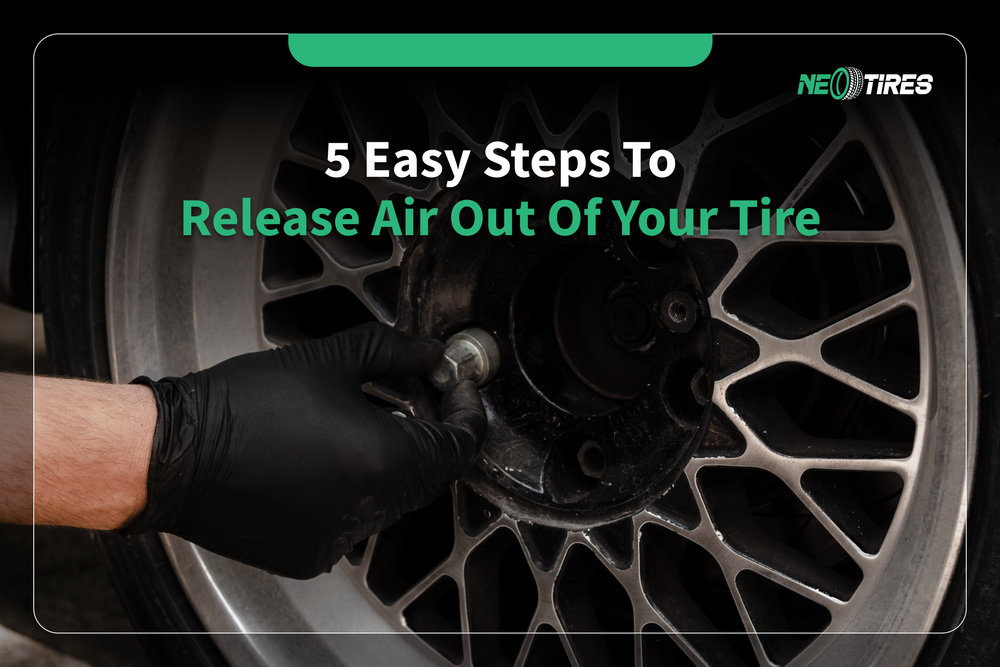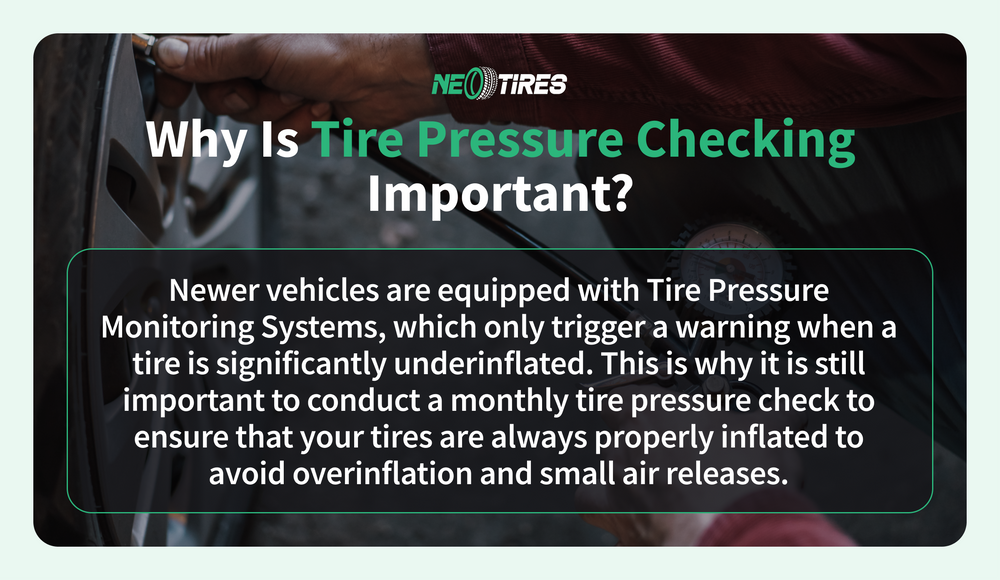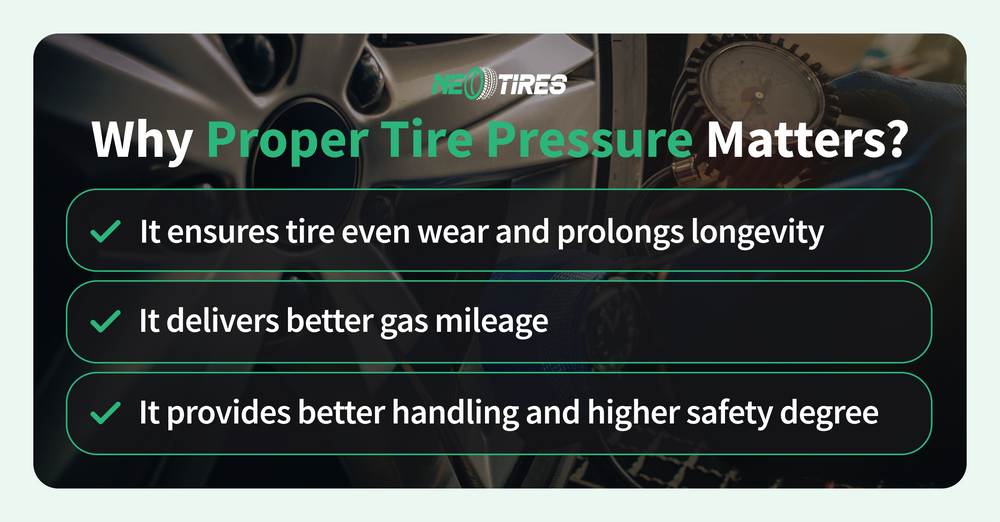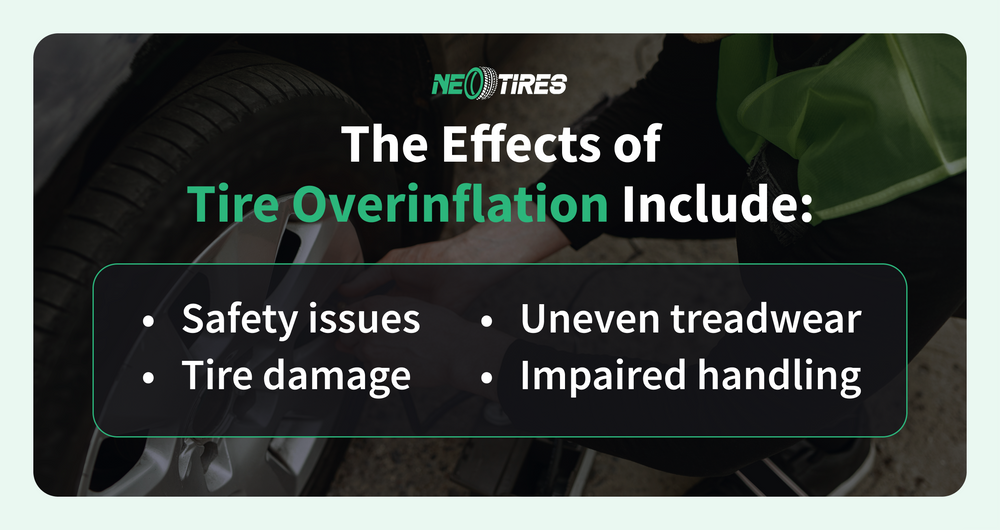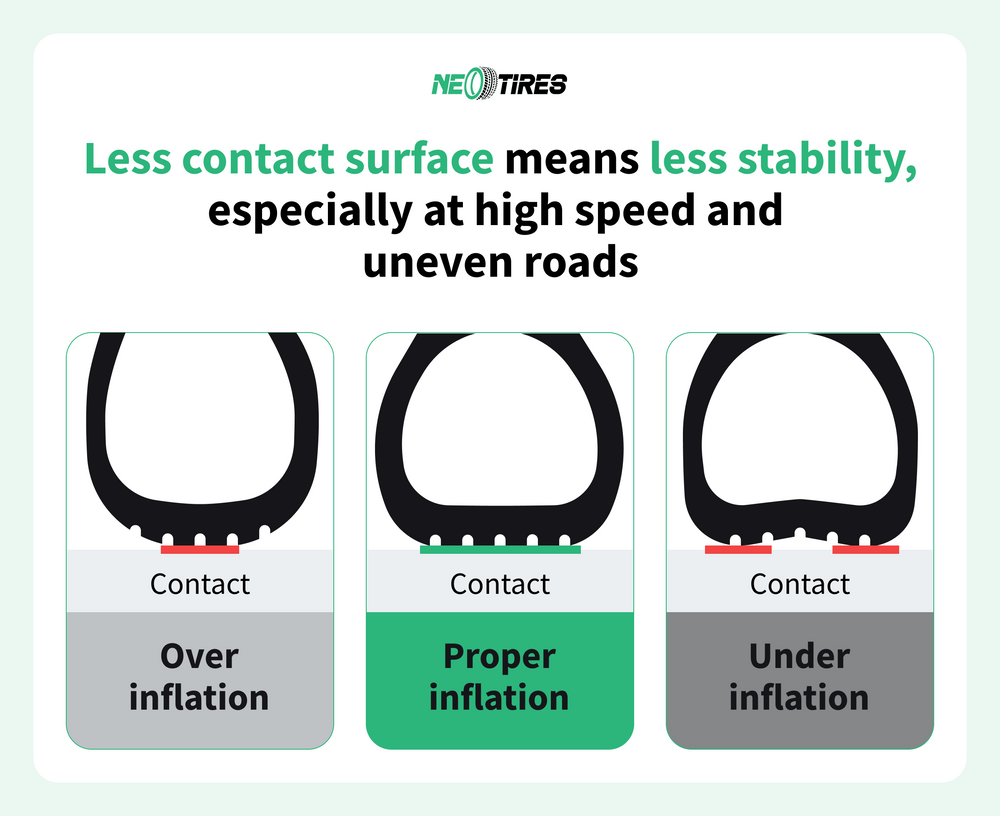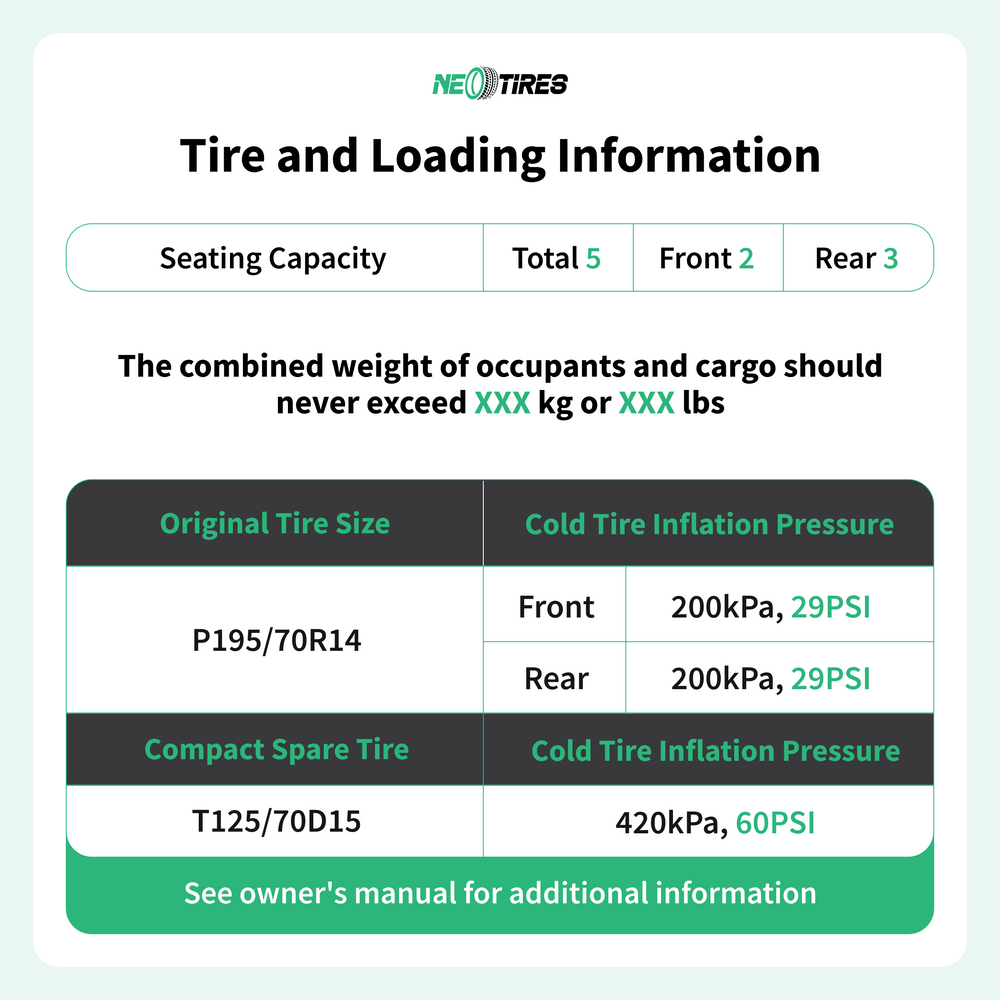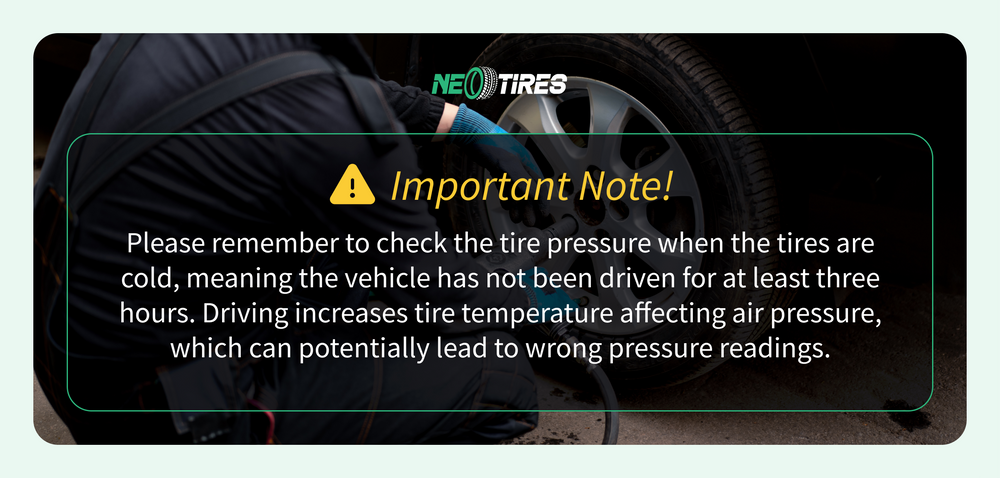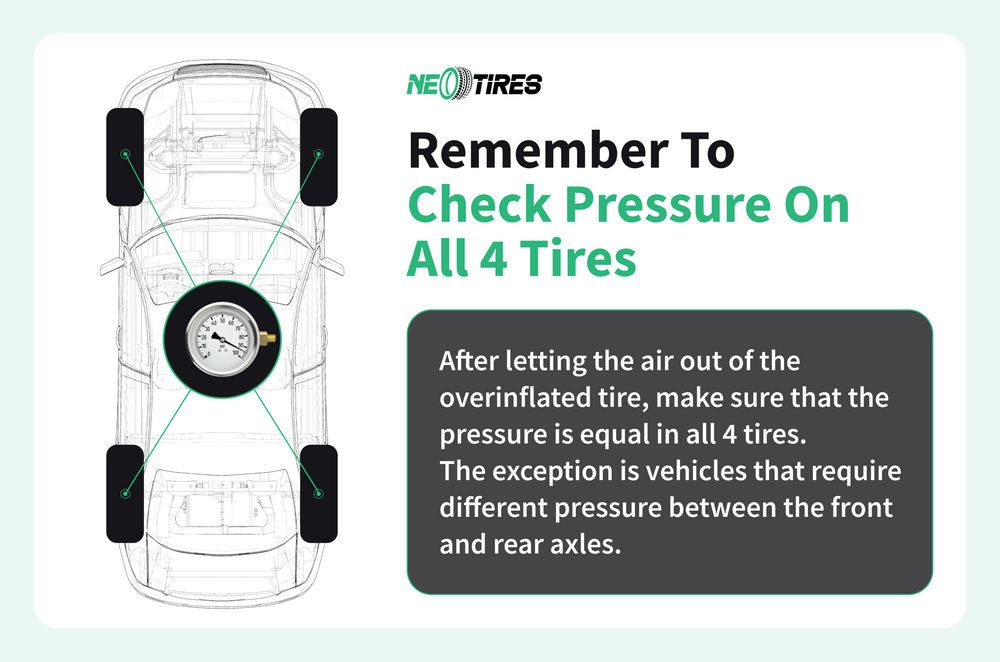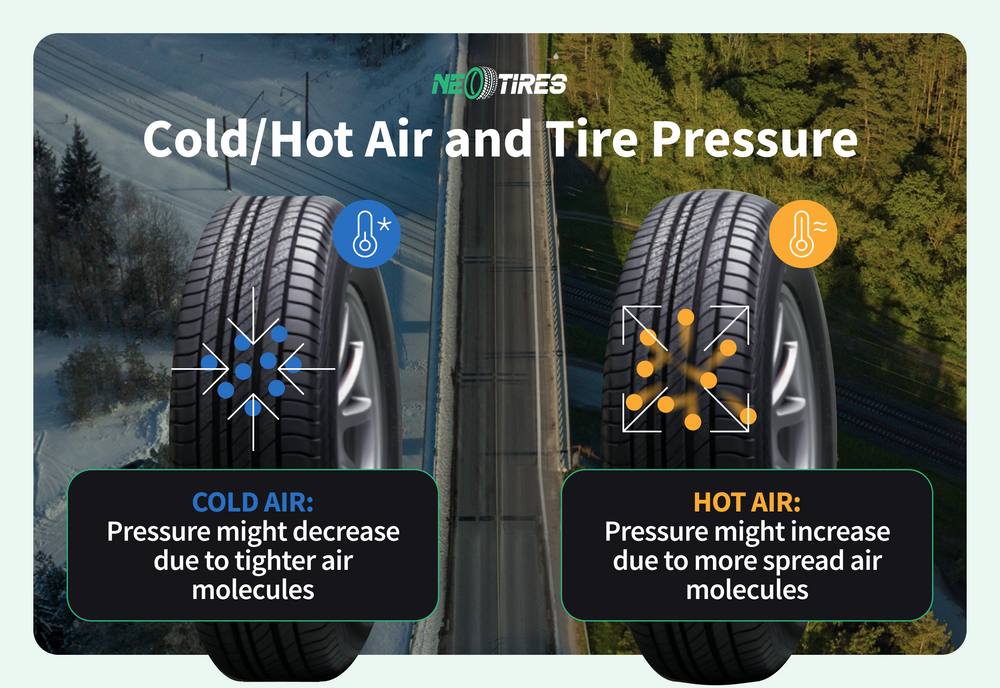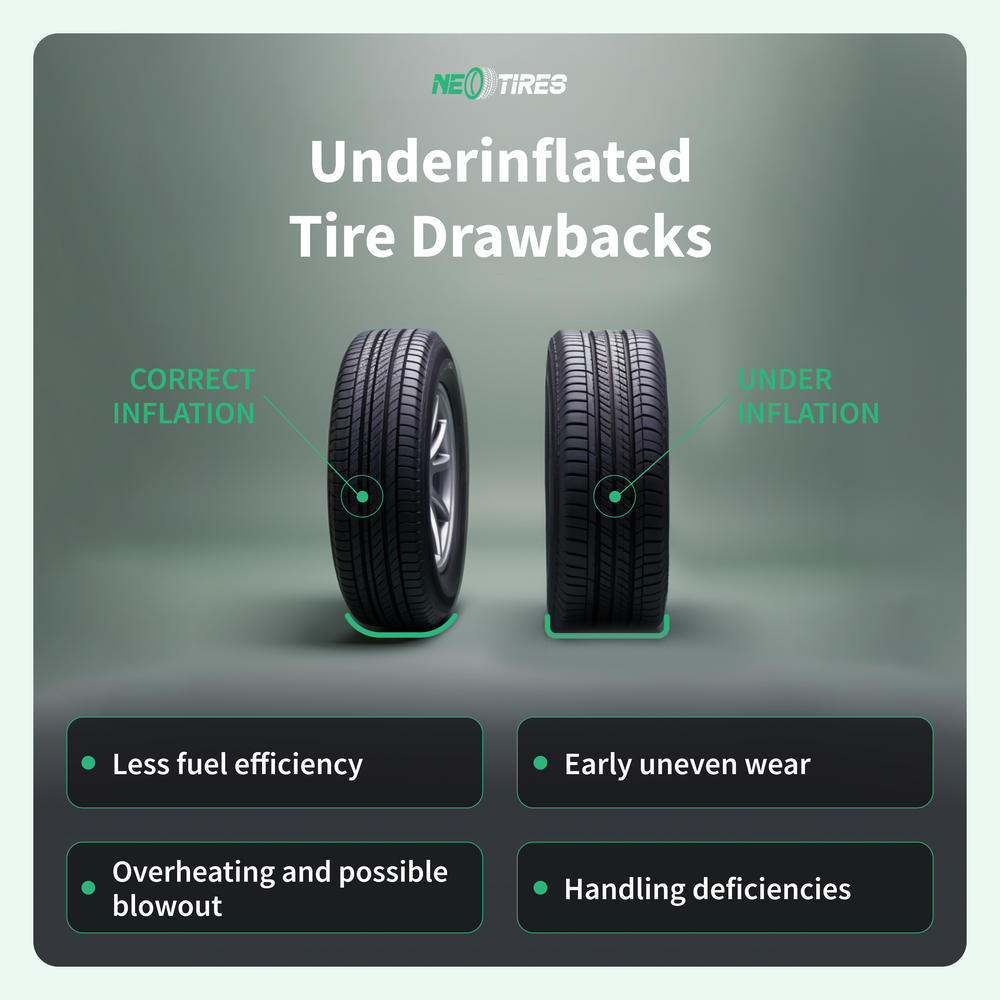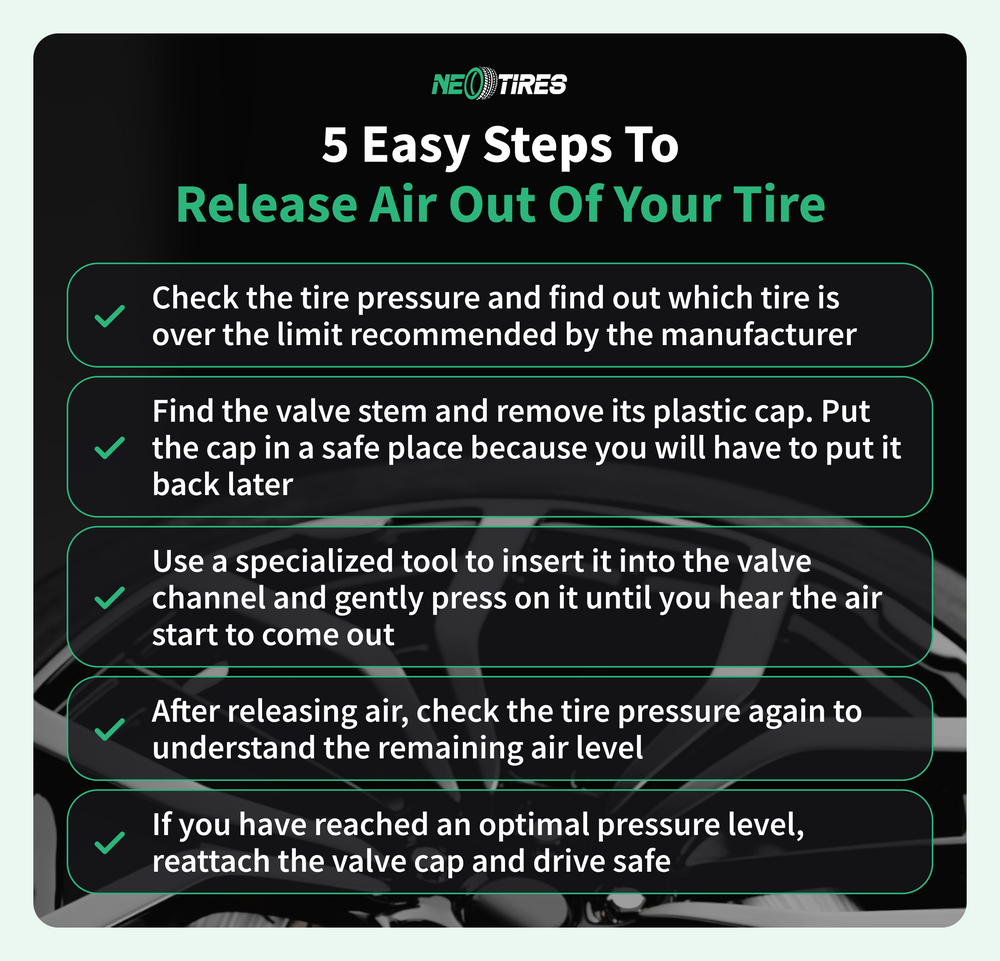Unfortunately, many drivers do not pay enough attention to their tires. And that’s a huge mistake because that's a crucial aspect related to vehicle safety. Even the best and safest vehicles on the market are not entirely safe without proper tires. At the same time, even the best tire on the market will have performance issues if you tend to under or overinflate it. Having this said, even if you drive an awesome and expensive vehicle - you should carefully and regularly check the air pressure in its tires to ensure high driving comfort, safety, and fuel efficiency.
According to several statistics, most drivers tend to run on low-pressure tires. One of the main reasons is that tires tend to deflate with time, undergoing the natural Osmosis process. Still, we’re not talking enough about overinflated tires, which is still a common problem (although less common than underinflated ones) and can still lead to huge issues. From less contact patch to annoying vibrations and bumpy rides (less comfort), overinflated tires do come with negative aspects. They tend to make your driving experience much worse and more dangerous! Here is what the NHTSA says about tire pressure:
Why Do Drivers Overinflate Tires?
In some cases, overinflation occurs naturally because the ambient temperature significantly increases in a matter of a few days. So, when the Fahrenheit degrees increase, you can expect some extra PSi in your tires as well.
Yet, some people tend to purposely overinflate their tires, saying that this way, they will last longer (without checking air pressure again). A huge mistake that you shouldn’t ever make!
Or, you may overinflate your tires unknowingly, such as if your tire inflator doesn’t have a built-in gauge and you go too far, or the gauge doesn’t show the correct pressure.
Whatever the case, overinflating your tires is a horrible mistake, just as bad as driving on underinflated ones. So, if you notice that your tires are overinflated, for whatever reason, you will need to deflate them to reach the desired (recommended) pressure as soon as possible!
How To Let Off Tire Pressure?
Well, this is the right article to learn everything you need regarding overinflated tires. We will talk about this issue, sharing some easy ways to let air out of tires. But before we talk about it, you should first understand a thing or two about tire pressure.
Understanding Tire Pressure
Tire pressure means the amount of air in your car’s tires. This pressure is measured in various readings, such as pounds per square inch (PSI) in the USA, or bar, or kPa in other areas of the world. Regardless, tire pressure should stay within optimal range for any vehicle. Tire pressure is one of the most crucial aspects when it comes to your car’s safety, performance, and fuel efficiency.
Having incorrectly inflated tires (more or less pressure) will significantly worsen the handling of your vehicle, its fuel efficiency, comfort levels, tire durability, and other aspects. The further away the pressure is from the recommended level, the worse the problems get. This is why it is so important to understand how tire pressure works. It can help you ensure the best performance and longevity of your tires. As said, this leads to the best comfort, fuel efficiency, handling, braking distance, and so on.
Importance Of Proper Tire Pressure
Proper tire pressure is different for each tire and vehicle. You must find it and make sure you drive the vehicle at that particular pressure. You can expect better fuel efficiency in your car as air pressure plays a role in the rolling resistance. Underinflation will lead to a larger contact area to the ground. This means that the engine will need to work harder to keep them rolling.
On the other extreme, correct tire pressure increases the chances of an even tire wear. Therefore, it prolongs their lifespan. Since you can use tires for longer and the vehicle uses less fuel, you save some money in the long run.
In addition to that, it helps you enhance comfort, as correct air pressure will reduce the vibrations and noise the tires are making during performance.
Yet, the single most important contribution of proper tire pressure is driving safety. As said, even if you drive the safest vehicle with the best tires, driving safety is significantly compromised if the air level is incorrect. With improper inflation, handling gets worse, stopping distance increases as scientific research shows, and steering response gets lazier. In short, with proper air pressure, you get a perfect balance and comfort, ensuring you can control your vehicle more easily, especially when you need to make evasive maneuvers and/or emergency brakes. This is thanks to perfect grip and traction.
Risks of Tire Overinflation
As said, some people purposely overinflate their tires in an attempt to avoid inflating their tires again anytime soon. Others are also purposely doing so in order to improve fuel efficiency. Or due to both reasons. Even if it might work, however, the gains are negligible and unjustified, as Bridgestone shows us.
That is, the vehicle is going to be less safe to drive, and that’s because overinflation worsens the tire’s surface contact. The contact patch with the road gets smaller, leading to a worsened grip. Therefore, this results in longer stopping distances. It also results in less lateral grip, which will significantly worsen handling, steering response, and especially sharp cornering.
Besides, while your vehicle may have a very slight improvement in fuel efficiency with overinflated tires, you will still not save any money! Although the emission levels and fuel consumption will be lower, the overall running costs will be higher. This is because overinflated tires also tend to wear out more in the center of the tread. (Whereas underinflated tires will wear out more on the outer edges). That uneven wear will reduce the overall lifespan of your tires, therefore, you will need to replace them more frequently. So, we can't talk about any savings here.
What Can Happen If Tire Pressure Is Too High?
Overinflated tires are also more susceptible to damage from potholes, curbs, as well as other road debris. It is because the excess pressure will make the entire tire more rigid. Too rigid. That’s why the tire cannot properly absorb the road impacts, increasing the risks of punctures, cuts, bulges, or even a blowout. Underinflation also makes tires more susceptible to these damages. But this time because the tire’s sidewalls are too soft, and closer to these risks (as sidewall height is shorter, due to less air pressure).
Some drivers may say that they are ready to accept all these compromises in an attempt to lower fuel intake, but there’s another problem that makes most drivers change their minds - lesser comfort levels. A high comfort level is something that you’d have to give up if you drive on overinflated tires. Too high air pressure will make tires stiffer, and as a result, they will not absorb bumps very well, resulting in an overall harsher ride. The difference is big! Even with an increase of 2 PSI, it can still have a significant effect on ride comfort. The passengers will experience an overall much less comfortable and more bumpy journey, with more vibrations.
So, due to all of these reasons, we would strongly recommend keeping the tires at the recommended levels (by the manufacturer). Check the recommended air pressure levels in your car’s owner’s manual, or on the sticker on the driver’s door jamb (for most vehicles). You’ll find the levels indicated based on the tire size and vehicle load in PSI, bar, or kPa, depending on your region. So, there are times when you may need to let the air out of your tires. Regardless if you inflate them too much by accident or purposely.
Necessary Tools to Deflate a Tire
Deflating a tire is much easier and faster than inflating it. It only requires a few basic tools. This is a process that you can easily do at home or on the road if necessary. Still, if you want to let air out of a tire, you need the right tools to do it accurately and safely. Besides, proper safety equipment may be helpful during the process.
Basic Tools For Tire Deflation
In order to deflate a tire, you will only need a tire deflation tool. However, you can do it with the help of any sharp object, such as a screwdriver or anything else you find handy. The object should be small and sharp enough to press it on the valve stem. This way, the air would start hissing out.
Nevertheless, our mechanics would still strongly recommend a tire deflation tool. That’s because with its help, you ensure you let the air out of the tire in a controlled manner, and you don’t risk damaging the valve stem.
Still, using a tire deflation tool or a screwdriver (or whatever object), you will not be able to tell how much you deflate the tire. This is why we strongly recommend having a tire pressure gauge as well. This way, you will measure the pressure inside the tire. There are various types of gauges available. You can consider the stick-type, digital, and dial gauges. The digital gauges are more expensive, but they are worth it because they are usually the easiest to read, and most accurate.
Safety Equipment
I’m a firm believer that safety always must be the number one priority when it comes to working on your car. Letting air out of a tire is usually a quick, easy, and harmless process. Nevertheless, there are still cases when things can go wrong, so it is always a good idea to be careful. I’m mostly talking about the risks of your eyes getting hurt during the process. This is because dust or debris can come out of the valve.
That’s why I recommend wearing safety glasses when you let air out of a tire. Moreover, I would recommend wearing safety gloves to keep your hands clean and safer from rough and dirty surfaces. Various oils could get on your hands which could be both hard-to-clean and dangerous. Also, it is a good idea to have a flashlight/headlamp in case you are attempting to let air out of a tire in a poorly lit location. But even your smartphone’s flashlight can be enough to get this job done.
If you’re doing it on the road, make sure you have the safety vest on. This way, you significantly increase the chances that other drivers will see you, increasing your safety and avoiding accidents.
As you can see, these are some rather basic tools and safety equipment that you are likely to have at your disposal. This way, you make sure that you are well-prepared to safely and accurately let air out of the tires as necessary.
How To Let Air Out Of Tires: Step-by-Step Guide
Letting air out of a tire is a very quick, easy, and straightforward job. Anyone can do it without any DIY experience. You just need to locate the valve stem on the tire with too much air pressure (which is very easy), and then let the air out of a tire with a screwdriver or the end of a key, or with an actual tire deflator. Make sure to check the air pressure inside the tire and compare it to the recommended levels. After deflating the tire, measure the pressure again and ensure it is at the recommended level. You may need to repeat the process between all other tires to make sure it is at the proper air pressure level.
Step One: Check The Tire Pressure
Before you even start the process of letting air out of a tire, it is important to measure the pressure first. That’s obvious because you need to make sure that the tire needs to be deflated in the first place, such as when it is above the manufacturer’s recommended levels. Check the recommended levels and compare them to the readings on the pressure gauge (in PSI, bar, or kPa). So, you need the tire pressure gauge (a small and cheap device that I recommend keeping in your vehicle’s trunk). Also, you need to read the sticker on your vehicle, either in the glove department, driver’s door jamb (in most cases), or in the vehicle's owner’s manual. It looks like in the image below:
Step Two: Locate The Valve Stem
That’s very easy - it will stick out of the wheel’s rim and it has (or should have) a plastic cap on it. By the way, if the valve stem doesn’t have a plastic cap, make sure to buy one and attach it. While the plastic cap may seem useless, it does protect the valve stem from various debris, which could damage the valve stem, and lead to air pressure issues in your tires.
So, once you find the plastic cap, remove it and keep it in a safe place, as you will need to add it back on when you get the job done. Ensure the valve stem is clean and free of debris. Clean if necessary before removing the valve cap. Put the end of the gauge’s hose on the valve. Ensure it is seated properly (there shouldn’t be any hissing sound). Read the measurements on the gauge.
Important Note!
It is important to measure the pressure when the tires are cold. Tires are considered cold when the vehicle has not been driven for at least three hours. Driving your vehicle causes friction between tires and the road surface, increasing the temperature. The temperature will have a huge effect on air pressure.
Higher heat will increase air pressure. That’s why, for the most accurate reading, you must make sure that the tires are cold. Driving your vehicle will increase the tire’s temperature, and this will increase air pressure. As a result, you may think that you need to let air out of the tire. Doing so will lead to underinflated tires because when they cool, there’s not going to be enough air pressure.
Step Three: Safely Release Air From The Tire
As soon as you check the tire pressure and you find the valve stem, you can start to let the air out (if necessary). To make sure it is necessary, check the recommended air pressure first. Now that you want to let air out, you will need a screwdriver or another pointy small object, such as the end of a key or a pen. With the valve plastic cap removed, insert the object into the valve and slightly press on it.
The air should start leaking from the tire. As it does, you will hear a hissing sound. Keep in mind that the air pressure inside is significantly faster than the air pressure in the atmosphere, that’s why it will leak out of the tire very quickly. So, we recommend letting air out of a tire in bursts. Check air pressure frequently to ensure you won’t deflate the tire too much.
Step Four: Re-Check The Tire Pressure
It is crucial to recheck the air pressure a few times because you could easily let too much air out. Especially considering that the air pressure will very quickly escape the tire if you do not have a tire inflator to use. That’s why it is important to repeat the process of releasing air and checking the pressure frequently, every few seconds, to make sure the air pressure is at the desired level. Letting too much air out of the tire is going to cause underinflation. That’s just as bad as overinflation.
Step Five: Reattach The Valve Cap
As said, you will need to reattach the plastic valve cap back on the valve stem to avoid debris entering the valve stem, damaging it, and causing issues with air pressure inside the tires. If you find that your tires lack the small plastic valve cap, you can still get the job done, but then make sure you go and buy and reattach it.
Note! Easy Way To Deflate Your Tires
Tire deflators can be very helpful, solving the problem of rechecking the tire pressure every few seconds. You can easily preset the necessary air pressure, and they will accurately deflate your tire to the desired (adjustable) level. All you need to do is to adjust the air pressure on the tire deflators and instead of a screwdriver or a key, attach this small device.
The deflator will let the air out of the tire until the necessary position. When it’s done, there’s going to be no hissing sound. When the hiss stops, you can safely unscrew the deflator. Just to make sure everything is fine, you can recheck the air pressure and then lock the valve cap.
Tips and Tricks For Safe and Effective Tire Deflation
Here are some pro-level tips on how to let the air out of a tire properly. It includes the role of temperature in tire deflation and how to recognize when to stop releasing air.
The Role of Weather Temperature
As said, driving will “add” some air pressure to your tires because of the heat generated during the drive, due to friction between the tires and road surface. Nonetheless, ambient temperature also can affect tire pressure. For example, a particularly hot day may increase the air pressure to about 5 PSI, and then it could go back to normal during the night.
Think of tire pressure like a living organism that will constantly change. You need to be aware of how and why it changes. So, if hot weather hits your region, the increase in pressure is highly likely due to an increase in temperature. If the weather cools down again, the air pressure will go back to normal again. Yet, if the weather doesn’t go back to normal and it stays hot for a while, you will need to let air out of your tires so you won’t drive on overinflated tires.
Recognizing When To Stop
Knowing when to stop to release air from your tires is highly essential. Otherwise, as you can guess, letting too much air out of tires is very easy, leading to underinflation. Due to experience, professionals know how much air they release with each burst. You will know it too, once you’ve done it a few times. As a beginner, you will need to recheck tire pressure more often to know how much pressure is released with each 1-3 second burst.
You do it very easily by simply measuring how much air pressure is reduced after letting the air out of a tire for two seconds. Measure the impact this two-second air release had on the pressure. This way, you will know how many bursts you need so you can reach the desired pressure.
Using The Tire Inflator at Your Nearest Gas Station
It is important to mention that you could also use a tire inflator at (almost) every gas station to let the air out of a tire (and inflate it, if you accidentally let too much air out). Obviously, tire inflators are meant to inflate your tires, however, you could also use them to let air out.
Not only that, but most of the tire inflators at gas stations nowadays are digital. This means that you can reach the nearest gas station, attach the hose of the inflator (don’t lose the plastic cap of the valve stem), and let it do its job. You just pre-set the target pressure and the system is going to do everything for you (inflate or deflate it, depending on the air pressure set on the inflator, and the air pressure in your tire).
Mistakes to Avoid When Deflating Your Tires
As said, deflating your tire is a simple process. But we also mentioned that it is a process where you could easily miss the target pressure, resulting in underinflation, so the tires will lead to worse handling, efficiency, and safety.
Avoiding Excessive Deflation
Perhaps the most common error that people make when it comes to letting air out of a tire is over-deflation. As said, underinflation comes with significant safety issues as it increases braking distance, makes less responsive steering, shortens tire lifespan, worsens fuel economy, and other issues.
While some people overinflate tires for better fuel economy, others tend to under-inflate their tires for smoother ride quality because as higher pressure leads to a bumpier ride, lower pressure leads to a less bumpier ride. Nevertheless, I would still recommend not to do so because underinflation comes with a myriad of other disadvantages.
There are cases when you may not win any better ride comfort at all. For example, your car’s suspension could be designed to work with a specific tire pressure. Moreover, there are cases when you may hit a big bump, and less air pressure could lead to suspension damage and other internal issues.
Having this said, it is important to check your tire pressure frequently and make sure that you do not go below the manufacturer’s recommended levels.
Even or Uneven Tire Pressure?
Another mistake that a lot of people tend to make is failing to ensure even tire pressure across all tires. Uneven tire pressure will lead to various driving issues. Some of the most prominent ones include imbalances in handling, uneven tire wear, as well as potential vehicle instability. Vehicle instability is particularly dangerous and likely to occur in harsh conditions, such as emergency braking and/or sharp cornering.
It is extremely important to make sure that you check and adjust the pressure in all four tires. Don’t do it only in the one tire that seems to be overinflated. Also, ensure tires are at the recommended levels depending on the manufacturer’s expertise. Some particular vehicles may require different air pressure for front axle tires and rear axle ones.
Conclusion
Mastering the air pressure in tires is something very easy, without financial loss, and very quick. It also has a direct impact on your safety on the road, among the ability to save a little money on fuel and less frequent tire changes. That’s why it is something that should be done by every driver. That’s even easier when it comes to letting air out of tires. Ensuring that the tires are correctly inflated, you will also ensure that your entire car works correctly. Vehicles are complex systems and many variations make it work optimally. Air pressure is one of the most important factors for the goal.
Frequently Asked Questions (FAQs)
How Do I Release Air From My Tire?
Locate the valve stem. Twist the cap counterclockwise to remove it. There you will find a thin metal pin in the center of the valve. Use a small object with a pointy tip such as a screwdriver (or your keys), to press on the metal pin in the center. Air will get out of the valve when you apply pressure to it. You will hear a hissing sound. Ensure you don’t let too much air out. If you do, you will need to inflate tires to the recommended air level. Don’t forget to reattach the plastic cap on the valve stem after you make sure there’s enough air pressure.
How Long Does It Take To Release Air From a Tire?
Is It Safe To Let Air Out Of Tires?
What If I Put Too Much Air In My Tire?
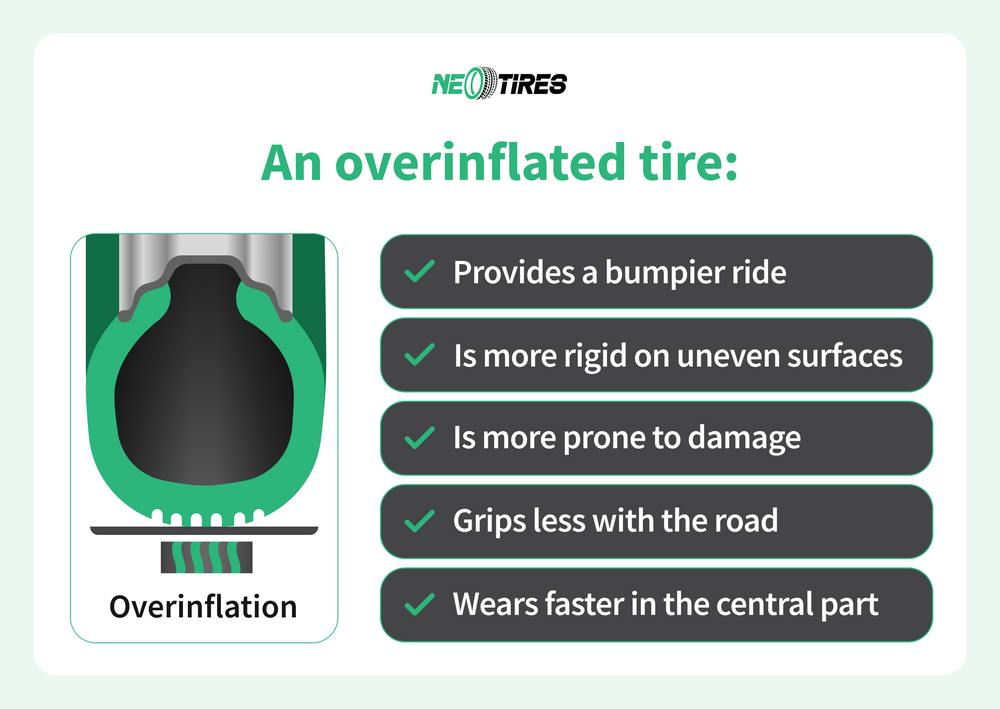
Why Trust NeoTires?
NeoTires is a trusted ally in any tire-related matter. Our team specializes in everything that means driving safety, and especially the contribution of tires to it. Here we study the technologies in this sector, follow the new developments in the industry, compare various products and bring qualified driving tips to all drivers who are looking to improve their driving experience.
We also offer a wide variety of products from the most reputable and reliable tire makers. Our prices, buying conditions and shipping policy are specially made so that the buyer can easily find what he needs for the most special driving demands. Feel free to contact us for any question about your tires. Our goal is to help you find the right product that suits the conditions in which you drive the best. Drive safe and choose your tires wisely!




